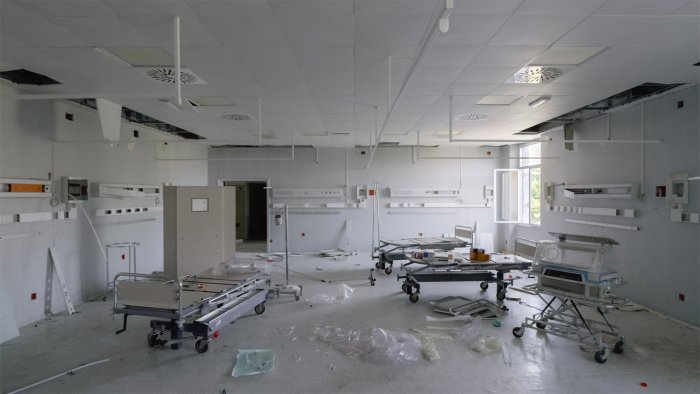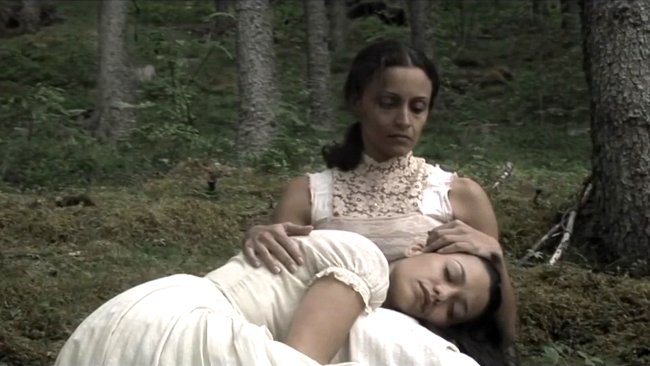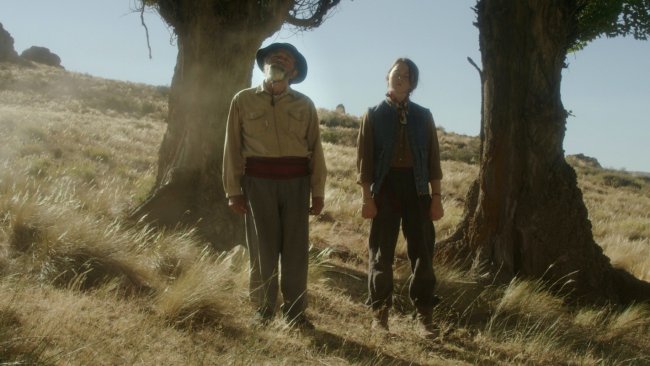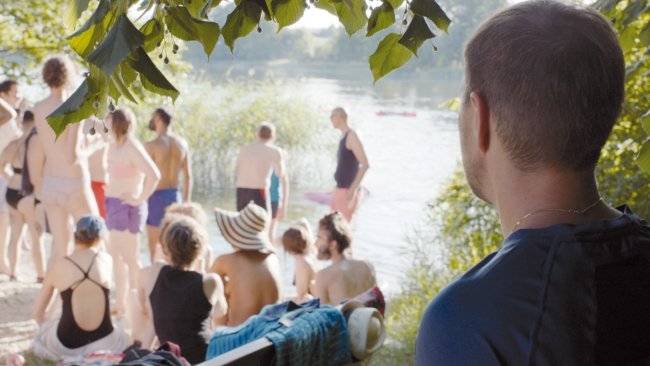Homo sapiens
[…] He creates a post-apocalyptic world, made up of the remains of a society – a world that is actually present, somewhere in the corner, of our sight.
[…] In Homo sapiens, documentary and science-fiction coincide in a strange way; we can find this same parity in ruins. Ruins are objects deprived of their function, allowing the possibility of extracting the pure visibility of things.
Text: Giuseppe Di Salvatore

During the screening of Homo sapiens, one has to repeatedly remind oneself that what we are seeing is real, and is occurring on our planet at this very moment. Nikolaus Geyrhalter gives us incredible images of abandoned human artefacts: rooms, theatres, buildings, towns and wastelands. He creates a post-apocalyptic world, made up of the remains of a society – a world that is actually present, somewhere in the corner, of our sight. Nature is victorious again, fulfilling the void left by the absence of human beings: wind, water, flies, and pigeons constitute the only soundscape in this hallucinatory world.
The film follows a rigorously simple pattern: approximately thirty seconds per sequence, always consisting of a fixed frame, for more than ninety minutes. No words, no actions, only the quiet labour of nature. But we never feel bored, as the incredible variety of locations and spaces titillates our curiosity and produces an amazing series of discoveries and even surprises. Homo sapiens slowly reveals itself to be a work about time: the time after our life, where we can see – not without a thrilling sensation – how our civilized earth would appear if humans were to suddenly disappear, the timespan of nature – with its slow unhesitating movement, which we learn to hear – and, most of all, the time of our perception and reflection. After watching, exercising our curiosity and observation, we cannot help but think about the vanity of artefacts, the human inclination to squander – or to dream up unsustainable constructions –, and the relationship between architecture and nature. We also start to imagine how life has been in the past, how it could have been, how these places could have a second life, or how they will continue their gradual disappearance.
In Homo sapiens, documentary and science-fiction coincide in a strange way; we can find this same parity in ruins. Ruins are objects deprived of their function, allowing the possibility of extracting the pure visibility of things. This is why I view this film as a triumph of visibility, bringing with it the poetry of human artefacts. The experience of, and reflection on, time and visibility: this is cinema at its essence.
This article contains a third-party video. If you would like to watch the video, please adjust your settings.
Watch
Screenings at Kino Kosmos Zürich
Info
Homo sapiens | Film | Nikolaus Geyrhalter | AT 2016 | 94’ | Bildrausch Basel, Filmpodium Zürich
First published: June 01, 2016



